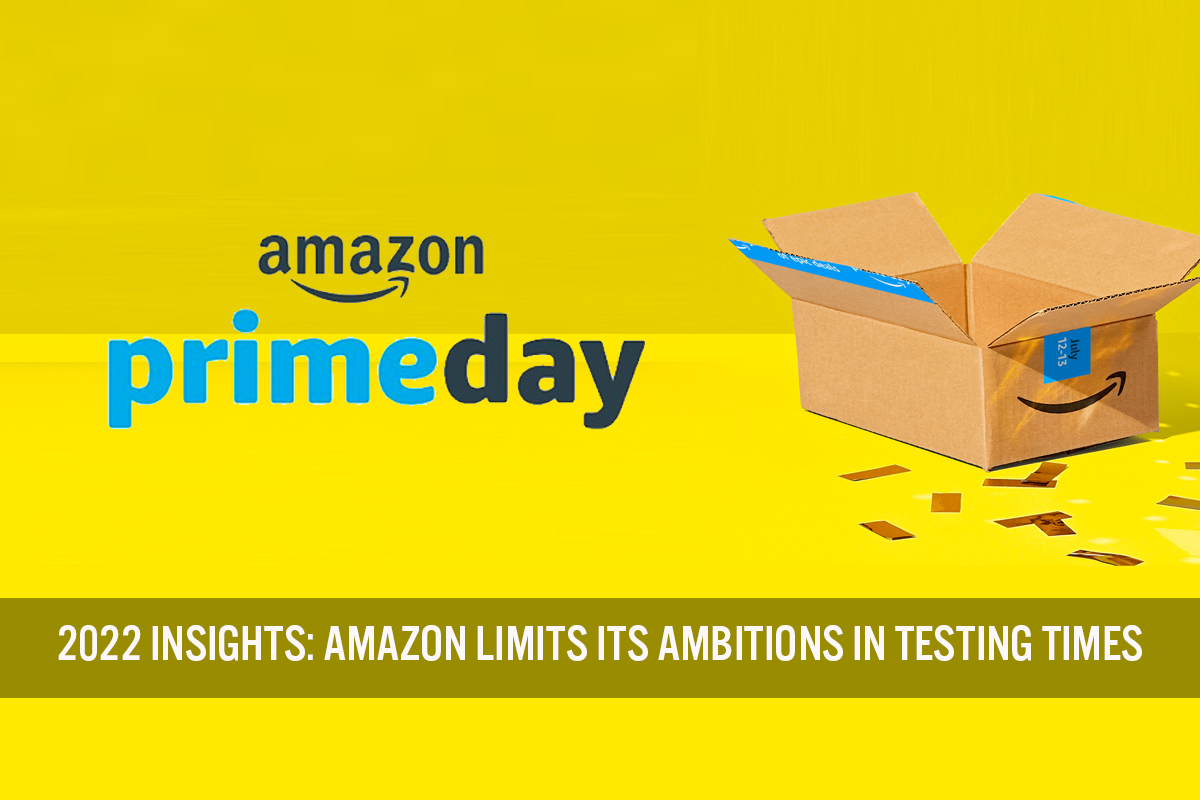
albert Chan
Introduction
What’s the Story?
In 2022, Amazon Prime Day returned to its regular month, July, after being scheduled in October and June in the past two years due to the pandemic. The eighth Amazon Prime Day in the US began at midnight PST (3:00 a.m. EDT) on Tuesday, July 12, and ran through Wednesday, July 13.
Why It Matters
Since its launch in 2015, Prime Day has become one of the most important retail promotions for both Amazon and the US retail sector overall. Over the years, many retailers have responded to the success of Prime Day with copycat promotions, as Amazon’s annual promotion gauges the pulse of upcoming back-to-school and holiday sales.
Amazon Limits Its Ambitions in Testing Times: Coresight Research Analysis
Amid Inflation, Amazon Turns the Spotlight on Its Private Labels
During Prime Day 2022, the deepest discounts focused on Amazon’s own private labels. This was pronounced among electronics, traditionally the centerpiece of Prime Day. Amazon reduced the price of its Fire TVs by almost 50% while discounting brands such as LG and Samsung by only up to 30%—unless the products were embedded with Alexa, Amazon’s virtual assistant. A 24-inch Fire TV, for example, was $89.88, down 47% from its regular price. Large discounts were also available on Amazon Basics, the e-commerce platform’s home-goods and furniture private labels, and often exceeded 40%.
Meanwhile, Amazon’s marketing levers for small-business vendors shifted. In the build-up to Prime Day 2021, Amazon launched a “Spend $10, Get $10” promotion, incentivizing shoppers to buy from small businesses. This year, Amazon ran a sweepstake offering small-business shoppers a chance to win a free trip to the Super Bowl. Amazon may have calculated that in this year’s more challenging economic circumstances, shoppers are less willing to spend to support small businesses, and are prioritizing value.
Shifting Excess Inventory Becomes a Priority
Amazon Prime Day 2022 possibly reflected a focus on clearing existing (and excess) inventory. Prime Day 2022 did not feature the launch of a new exclusive product to mark the event. In late June, the time which, on the model of previous years, Amazon would normally have spent promoting the July promotion, plans leaked for the subsequent “Prime Fall Deals Event” in the fourth quarter of the year. This second event has yet to be confirmed by the company.
Amazon reduced its promotion and marketing events but did not come up with a new tactic to attract inflation-weary shoppers. Unlike some of its predecessors, Prime Day 2022 did not feature a new product launch or a Prime Day concert—Lightning Deals is one surviving feature. However, with inflation on the rise and stimulus on the wane, it is not clear that such intermittent appeals to impulse buying will succeed with shoppers this year.
A Victim of Its Own Success, Prime Day is Copied
The Prime Day concept is no longer unique to Amazon. The past success of the event, coupled with a desire to benefit from pent-up seasonal and holiday demand, has led Amazon’s rivals to host parallel promotions. “Black Friday in July,” the phrase Amazon coined as part of its first Prime Day in 2015, is now how its competitors characterize their own promotions.
This year, competition has further intensified for two key reasons. Many retailers are faced with inventory excesses, and Amazon’s two brick-and-mortar rivals, Target and Walmart, have made inroads into the online space it once dominated. After hosting its first-ever online-only promotion, the Walmart+ Weekend on June 2–5, Walmart did not time its annual Deals for Days promotion to coincide with Prime Day this year. However, the brick-and-mortar giant initiated a new round of discounts on back-to-school essentials starting on July 7. Target’s timing is more aggressive: Its online-exclusive Target Deal Days started a day earlier than Prime Day and runs through July 13. Even smaller retailers are launching competing promotions during Prime Day:
Figure 1. Selected Retailers’ Rival Promotions to Prime Day
| Best Buy | Black Friday in July ran July 11–13. Members of Totaltech, its $199-a-year membership program, could buy selected items for reduced sale prices from on July 10. |
| Home Depot | Home Depot’s summer sale ran through July 13 with up to 60% off home improvement, furniture and other categories. |
| Kohl’s | Kohl’s Summer Cyber Deals overlaps precisely with Prime Day, running July 12–13, with 70% off some apparel and kitchenware. |
| Macy’s | Macy’s Black Friday in July started in the week of Independence Day and ran through July 11, featuring big discounts on about 100,000 items across almost all segments. |
| Nordstrom | The Nordstrom Anniversary Sale will take place on July 15–31, although Nordstrom cardholders and Nordy Club members can access deals before July 15. |
| Target | The online-exclusive event Target Deal Days began a day earlier than Prime Day 2022 and ends on the same day. Holders of its free Redcard save an additional 5% on their purchases. |
| Walmart | Walmart held its first online-only promotion, the Walmart+ Weekend, on June 2–5. In July it launched discounts on back-to-school essentials. |
What We Think
Amazon Prime Day 2022 was held in a downbeat economic environment. Specific figures and details yet to be reported by Amazon, but this year the event appeared to reflect the need to clear inventories—including in rival campaigns from other retailers. Consumer reception of Prime Day will likely help reshape and clarify outlooks for Amazon and the retail sector at a time of high inflation and inventory pressures.